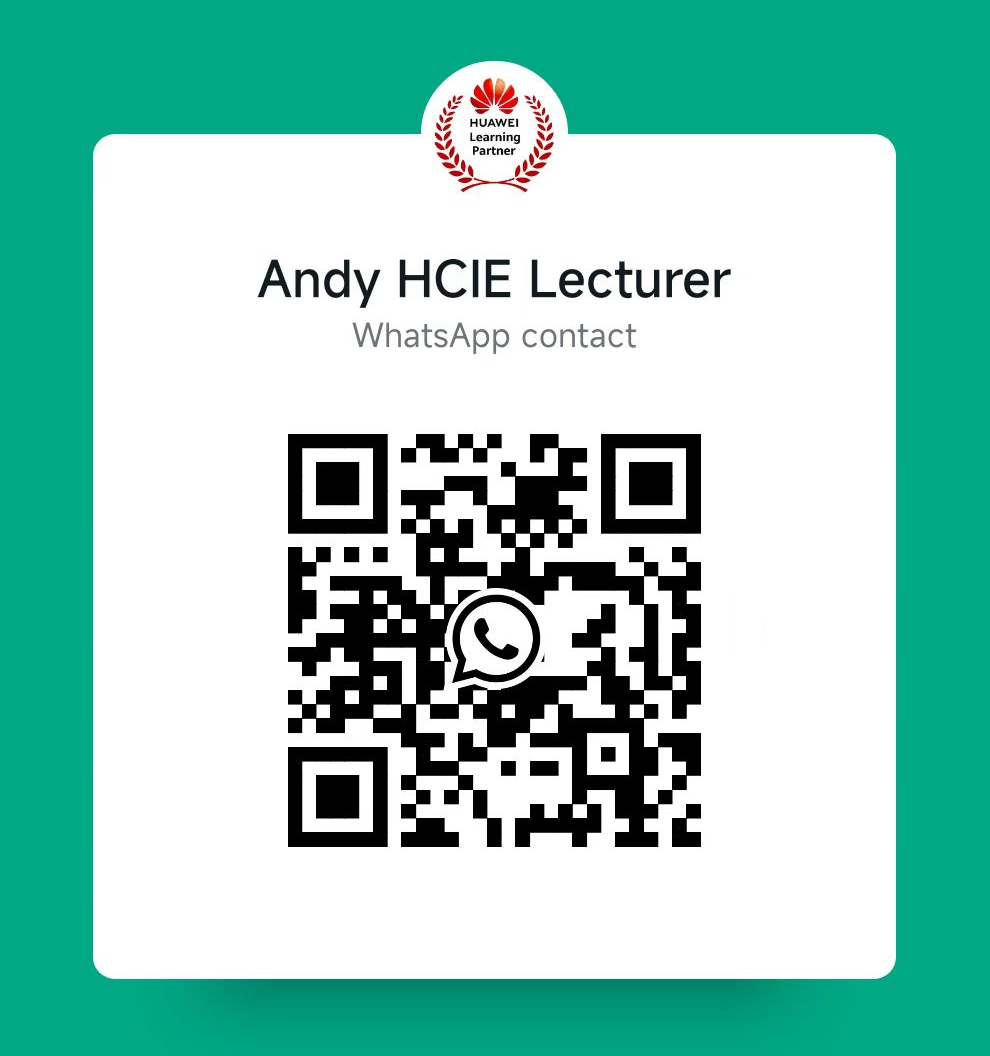What topics are covered in CCNA?
Update time:2024-11-01
The Cisco Certified Network Associate (CCNA) certification is one of the most popular and widely recognized entry-level certifications in the IT industry. It is a comprehensive certification that tests an individual's knowledge and skills in networking and related technologies. The CCNA exam (200-301) is designed to cover a broad range of topics, making it essential for candidates to be well-prepared. In this article, we will break down the key topics covered in the CCNA exam to help you understand what areas to focus on as you prepare for certification.

1. Network Fundamentals
The foundation of the CCNA exam is networking fundamentals. Understanding how networks function and the underlying technologies is crucial for success in the CCNA exam.
OSI and TCP/IP Models: The OSI (Open Systems Interconnection) and TCP/IP models are fundamental frameworks used to understand how data is transmitted across a network. The exam tests your knowledge of each layer's function and how devices communicate at each level.
IP Addressing: IP addresses are essential for network communication, and understanding IPv4 and IPv6 addressing is a key component. You’ll need to know how to assign IP addresses, calculate subnet masks, and understand concepts like public and private IP addresses.
Subnetting: The ability to divide an IP address range into smaller subnets is crucial for efficient network management. Subnetting involves calculating network and broadcast addresses, which is an important skill for the exam.
Switches and Routers: You’ll need to understand the basic functions of switches and routers, including how they forward data, assign MAC addresses, and direct network traffic.
Cabling and Physical Infrastructure: The exam also covers physical network components, such as cables, switches, and routers. You’ll need to know about different types of cables, such as Ethernet and fiber optics, and how they are used in networks.
2. Network Access
This topic area covers how devices gain access to a network and the methods used to manage these connections.
Switching Concepts: Switches play a vital role in managing network traffic within a local area network (LAN). You’ll need to know how switches use MAC addresses to forward data and the basics of VLANs (Virtual Local Area Networks).
VLANs: VLANs are used to logically segment networks into smaller sub-networks, which can improve performance and security. The CCNA exam covers VLAN configuration, VLAN tagging, and inter-VLAN routing.
Spanning Tree Protocol (STP): STP is used to prevent loops in a network with multiple switches. Understanding how STP works and the different types (such as Rapid Spanning Tree Protocol or RSTP) is critical.
Wireless Networks: Wireless technologies are another important area covered in this section. The exam includes basic concepts of wireless networking, such as Wi-Fi standards, security protocols (like WPA2), and troubleshooting wireless issues.
3. IP Connectivity
The IP Connectivity section focuses on how data is routed between networks, which is critical in understanding how the internet and larger networks function.
Routing Concepts: Routing is essential for directing data from one network to another. The exam will test your knowledge of static and dynamic routing methods, default routes, and how routers determine the best path for data.
Routing Protocols: You’ll need to understand key routing protocols such as:
OSPF (Open Shortest Path First): OSPF is a link-state routing protocol widely used in enterprise networks. The CCNA exam tests your understanding of how OSPF works and how to configure it.
EIGRP (Enhanced Interior Gateway Routing Protocol): EIGRP is a hybrid routing protocol that combines the best features of distance-vector and link-state protocols. Understanding how EIGRP functions and how to configure it is important for the exam.
Default and Static Routing: You’ll also need to understand how to manually configure default and static routes, which are commonly used in smaller networks.
IPv4 vs. IPv6: While IPv4 remains the dominant protocol, the transition to IPv6 is gaining momentum. The exam covers the differences between IPv4 and IPv6, including their addressing schemes and routing methods.
Contact me immediately to get the golden key helping you fast express your certificate. 4. IP Services
The CCNA exam also tests your knowledge of various IP services that play critical roles in network operations.
DHCP (Dynamic Host Configuration Protocol): DHCP automates the assignment of IP addresses to devices on a network. You’ll need to understand how DHCP works and how to configure it on a network.
NAT (Network Address Translation): NAT is used to translate private IP addresses into public IP addresses so devices on a private network can communicate with the internet. The exam will cover different types of NAT, including static, dynamic, and PAT (Port Address Translation).
DNS (Domain Name System): DNS is responsible for translating domain names (like www.example.com) into IP addresses. You’ll need to know how DNS works and how to troubleshoot common DNS issues.
Quality of Service (QoS): QoS is used to prioritize network traffic, ensuring that important data like video calls or VoIP gets the bandwidth it needs. The exam covers how QoS is implemented and how it improves network performance.
5. Security Fundamentals
Given the increasing importance of network security, the CCNA exam includes a strong focus on security fundamentals.
Access Control Lists (ACLs): ACLs are used to filter network traffic and control who can access certain parts of a network. You’ll need to know how to configure both standard and extended ACLs to secure network devices and traffic.
VPNs (Virtual Private Networks): VPNs allow secure communication between devices over public networks, such as the internet. The exam tests your understanding of VPN concepts and basic configuration.
Device Hardening: Securing network devices is essential for preventing unauthorized access. The exam covers methods for securing routers and switches, including using strong passwords, disabling unused ports, and enabling secure remote access (like SSH).
6. Automation and Programmability
One of the newer topics in the CCNA exam is network automation and programmability, reflecting the industry’s shift toward software-defined networking (SDN) and automation.
Network Automation: The exam tests your understanding of basic automation tools like Python and Ansible, which can be used to automate network configuration and management tasks.
APIs (Application Programming Interfaces): APIs allow different software applications to communicate with each other. You’ll need to understand how APIs are used in networking, particularly with SDN.
Software-Defined Networking (SDN): SDN separates the control plane from the data plane, allowing for more flexible and programmable networks. The exam covers the basics of SDN and how it impacts traditional networking.
Conclusion
The CCNA exam covers a wide array of topics, from basic networking concepts to more advanced areas like automation and security. It’s designed to test both theoretical knowledge and practical skills, making it essential for candidates to study a broad range of materials and get hands-on practice with network configurations. Understanding these key topics and how they fit into modern network environments will not only help you pass the exam but also set you up for success in your networking career.
I'm your man who have the 100% valid dumps , buy it now for 50% off to clear your exam!
Click it ↓↓

1. Network Fundamentals
The foundation of the CCNA exam is networking fundamentals. Understanding how networks function and the underlying technologies is crucial for success in the CCNA exam.
OSI and TCP/IP Models: The OSI (Open Systems Interconnection) and TCP/IP models are fundamental frameworks used to understand how data is transmitted across a network. The exam tests your knowledge of each layer's function and how devices communicate at each level.
IP Addressing: IP addresses are essential for network communication, and understanding IPv4 and IPv6 addressing is a key component. You’ll need to know how to assign IP addresses, calculate subnet masks, and understand concepts like public and private IP addresses.
Subnetting: The ability to divide an IP address range into smaller subnets is crucial for efficient network management. Subnetting involves calculating network and broadcast addresses, which is an important skill for the exam.
Switches and Routers: You’ll need to understand the basic functions of switches and routers, including how they forward data, assign MAC addresses, and direct network traffic.
Cabling and Physical Infrastructure: The exam also covers physical network components, such as cables, switches, and routers. You’ll need to know about different types of cables, such as Ethernet and fiber optics, and how they are used in networks.
2. Network Access
This topic area covers how devices gain access to a network and the methods used to manage these connections.
Switching Concepts: Switches play a vital role in managing network traffic within a local area network (LAN). You’ll need to know how switches use MAC addresses to forward data and the basics of VLANs (Virtual Local Area Networks).
VLANs: VLANs are used to logically segment networks into smaller sub-networks, which can improve performance and security. The CCNA exam covers VLAN configuration, VLAN tagging, and inter-VLAN routing.
Spanning Tree Protocol (STP): STP is used to prevent loops in a network with multiple switches. Understanding how STP works and the different types (such as Rapid Spanning Tree Protocol or RSTP) is critical.
Wireless Networks: Wireless technologies are another important area covered in this section. The exam includes basic concepts of wireless networking, such as Wi-Fi standards, security protocols (like WPA2), and troubleshooting wireless issues.
3. IP Connectivity
The IP Connectivity section focuses on how data is routed between networks, which is critical in understanding how the internet and larger networks function.
Routing Concepts: Routing is essential for directing data from one network to another. The exam will test your knowledge of static and dynamic routing methods, default routes, and how routers determine the best path for data.
Routing Protocols: You’ll need to understand key routing protocols such as:
OSPF (Open Shortest Path First): OSPF is a link-state routing protocol widely used in enterprise networks. The CCNA exam tests your understanding of how OSPF works and how to configure it.
EIGRP (Enhanced Interior Gateway Routing Protocol): EIGRP is a hybrid routing protocol that combines the best features of distance-vector and link-state protocols. Understanding how EIGRP functions and how to configure it is important for the exam.
Default and Static Routing: You’ll also need to understand how to manually configure default and static routes, which are commonly used in smaller networks.
IPv4 vs. IPv6: While IPv4 remains the dominant protocol, the transition to IPv6 is gaining momentum. The exam covers the differences between IPv4 and IPv6, including their addressing schemes and routing methods.
Contact me immediately to get the golden key helping you fast express your certificate. 4. IP Services
The CCNA exam also tests your knowledge of various IP services that play critical roles in network operations.
DHCP (Dynamic Host Configuration Protocol): DHCP automates the assignment of IP addresses to devices on a network. You’ll need to understand how DHCP works and how to configure it on a network.
NAT (Network Address Translation): NAT is used to translate private IP addresses into public IP addresses so devices on a private network can communicate with the internet. The exam will cover different types of NAT, including static, dynamic, and PAT (Port Address Translation).
DNS (Domain Name System): DNS is responsible for translating domain names (like www.example.com) into IP addresses. You’ll need to know how DNS works and how to troubleshoot common DNS issues.
Quality of Service (QoS): QoS is used to prioritize network traffic, ensuring that important data like video calls or VoIP gets the bandwidth it needs. The exam covers how QoS is implemented and how it improves network performance.
5. Security Fundamentals
Given the increasing importance of network security, the CCNA exam includes a strong focus on security fundamentals.
Access Control Lists (ACLs): ACLs are used to filter network traffic and control who can access certain parts of a network. You’ll need to know how to configure both standard and extended ACLs to secure network devices and traffic.
VPNs (Virtual Private Networks): VPNs allow secure communication between devices over public networks, such as the internet. The exam tests your understanding of VPN concepts and basic configuration.
Device Hardening: Securing network devices is essential for preventing unauthorized access. The exam covers methods for securing routers and switches, including using strong passwords, disabling unused ports, and enabling secure remote access (like SSH).
6. Automation and Programmability
One of the newer topics in the CCNA exam is network automation and programmability, reflecting the industry’s shift toward software-defined networking (SDN) and automation.
Network Automation: The exam tests your understanding of basic automation tools like Python and Ansible, which can be used to automate network configuration and management tasks.
APIs (Application Programming Interfaces): APIs allow different software applications to communicate with each other. You’ll need to understand how APIs are used in networking, particularly with SDN.
Software-Defined Networking (SDN): SDN separates the control plane from the data plane, allowing for more flexible and programmable networks. The exam covers the basics of SDN and how it impacts traditional networking.
Conclusion
The CCNA exam covers a wide array of topics, from basic networking concepts to more advanced areas like automation and security. It’s designed to test both theoretical knowledge and practical skills, making it essential for candidates to study a broad range of materials and get hands-on practice with network configurations. Understanding these key topics and how they fit into modern network environments will not only help you pass the exam but also set you up for success in your networking career.
I'm your man who have the 100% valid dumps , buy it now for 50% off to clear your exam!
Click it ↓↓
Previous:CCNA exam topics?














